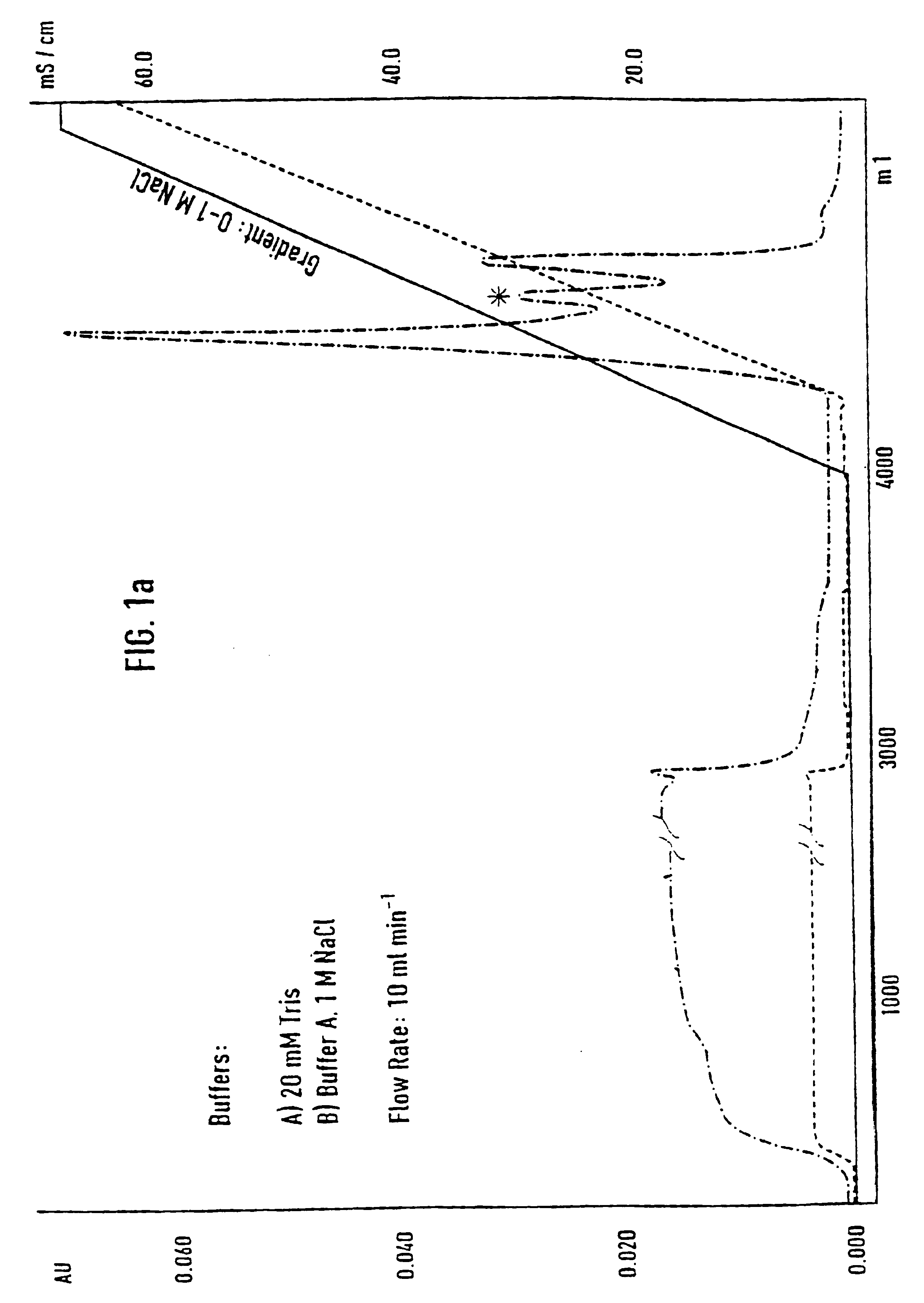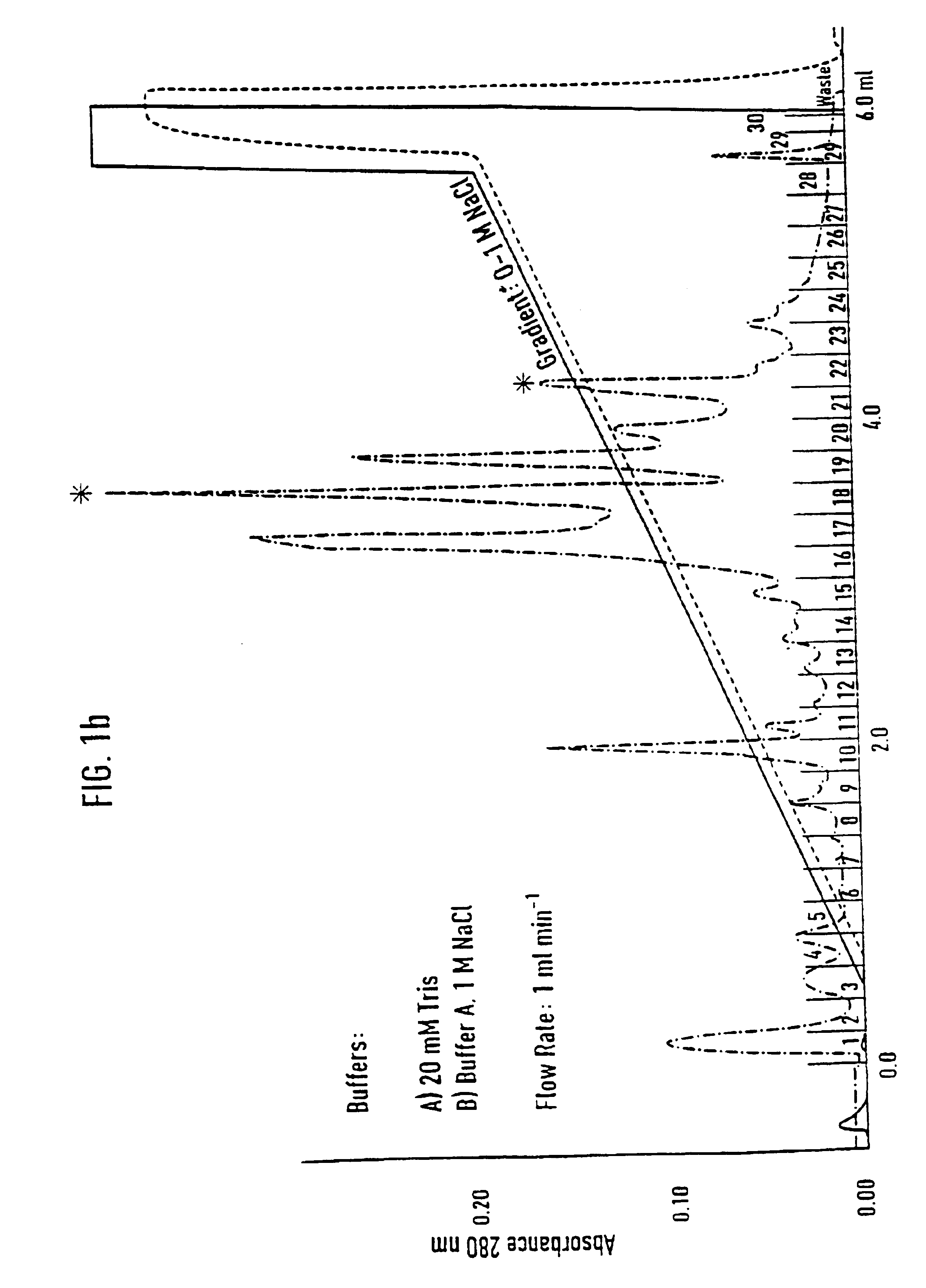Protein for blocking platelet adhesion
a technology of protein and platelet, which is applied in the direction of peptide/protein ingredients, depsipeptides, fungi, etc., can solve the problem that the specificity of most of these new inhibitors is not well studied, and achieve the effects of reducing pco, reducing visual acuity, and reducing pco
- Summary
- Abstract
- Description
- Claims
- Application Information
AI Technical Summary
Benefits of technology
Problems solved by technology
Method used
Image
Examples
example 1
Screening Adhesion Inhibitors
[0069]Platelet adhesion to collagen has been the functional background four screening saliva components. In addition four additional tests available for the assesment of various actions of antithrombotic drugs such as the AZOCOLL assay, amidase activity assay, vWillebrand dependent binding assay and platelet aggregation assay have been used to exclude functional properties which idealy would not be linked to an adhesion inhibitor. While most of this assays used here are standard assays, the platelet adhesion assay had to be modified to fitt our specific needs. In short: Horm collagen (Nycomed) has been coated to 96 well plates (Nunc) by using acidified collagen at a concentration of 20 μg / ml and incubating the plates overnight. After washing the plates 3 times with PBS the residual surface of the wells have been blocked with 1% BSA. Platelets isolated freshly from human citronylated blood have been added simultaneously with fractions derived from the ind...
example 2
Purification of a Natural Inhibitor
[0070]The invention used saliva collected from H. medicinalis which is known to contain a number of bioactive proteins such as hirudin, elastase inhibitors, collagenases and platelet aggregation inhibitors such as calin (Munro, R. et al.; Blood Coagulation and Fibrinolysis, 1991, 2, 179-184) and LAPP (Schaffer, L. W. et al.; Arterioscler. Thromb., 1993, 13, 1593-1601). Besides this characterized proteins the majority of the roughly eighty proteins detectable by SDS-PAGE are still unkown. In the present invention the fractionated saliva and the screening strategy as described in Example 1 was used in order to screen for the novel proteins that interferes directely with platelet collagen interaction.
[0071]Separation of an adhesion inhibitor activity from raw saliva turned out to be a critical task, mainly due to the irreversible loss of most of the adhesion inhibitory activity in the first chromatographic step. Additives such as 12% ethanol and dival...
example 3
Biochemical Characterization
[0072]Purification of Saratin as disclosed in Example 1 led to an essentially pure protein with an apparent moleculare weight around 21 kDa shown under reducing conditions in SDS-PAGE (FIG. 2) The complete amino acid sequence was obtained by direct sequencing of the first 48 amino acids of the purified protein and was completed by the sequencing of several internal peptides generated via enzymatic degradation. The complete protein sequence is disclosed in SEQ. ID. NO. 2
[0073]The protein is composed of 103 amino acids with an calculated molecular weight of 12067.9 and an actual molecular weight of 12061.9 as deduced by ESI-Mass spectrometry. This differences in theroretical and measured molecular weight indicates that all the six cysteins identified in Saratin are involved in the formation of S-S bridges. This finding is supported by the observation of a strong change in mobility of the protein when chromatographed in SDS-PAGE under reducing or none reduci...
PUM
| Property | Measurement | Unit |
|---|---|---|
| body weight | aaaaa | aaaaa |
| body weight | aaaaa | aaaaa |
| concentration | aaaaa | aaaaa |
Abstract
Description
Claims
Application Information
 Login to View More
Login to View More - R&D
- Intellectual Property
- Life Sciences
- Materials
- Tech Scout
- Unparalleled Data Quality
- Higher Quality Content
- 60% Fewer Hallucinations
Browse by: Latest US Patents, China's latest patents, Technical Efficacy Thesaurus, Application Domain, Technology Topic, Popular Technical Reports.
© 2025 PatSnap. All rights reserved.Legal|Privacy policy|Modern Slavery Act Transparency Statement|Sitemap|About US| Contact US: help@patsnap.com



